As I said earlier in this post…
cb450 and cb500t have no valve springs.
They have a torsion bar set up.
Let’s take a look at how exactly the torsion bar works. It’s pretty cool.
Pic 1 –
The engines are double overhead cam which means there is a separate cam lobe for each valve. Tuners and people looking to make power like DOHC because you can fine tune the cam duration and lift for hitting each valve. It’s easier to make more power with DOHC compared to SOHC (single cam). Thats probably a general statement, but whatever.
Pic 2 –
Here is the torsion bar assembly all together. Again… no springs anywhere. It took me some time to figure out exactly what’s happening. If there is no actual spring, how does the bar spring back to close the valve?
Pic 3 –
We can see in the below pic it’s the same as Pic 2, except taken apart.
The way the bar springs back to close the valve isn’t by springing… The inner piece of metal actual twists. Yea… twists.
Pretty crazy huh. It’d be like taking a solid piece of steel and placing so much pressure on it, you twist it. ha.
The bar is fixed on the left side, and the right side, it fits onto the outer sleeve which put pressure on it when the valve opens, and literally twists that inner bar to close the valve.
And we can see in the bottom right of the pic… the claw looking thing is what’s attached to the valve, so when the valve gets hit open by the cam follower, this claw thing is what pushes back on the outer sleeve of the torsion bar, to then put pressure on the inner bar to twist itself.
Pic 4 –
Below pic may help clear it all up.
Green arrow is the camshaft. This spins and hits the Orange arrow which is the cam follower.
Orange arrow opens the valve down into the combustion chamber.
Red arrow is the claw which is ultimately attached to the torsion bar which twists itself to push the valve back in the closed position.
Pic 5 –
There are two torsion bars. A and B.
Apparently, over time… the torsion bars can get soft or tired and lead to valve float. I talked to a couple old school Honda cb450 race builders and they suggested a couple things.
Find NOS (new old stock) torsion bars.
Or, test mine with a inch-lb torque wrench. Apply pressure on the torsion bar to see if it’s within spec. 80in’lb is stock. Anything under 60in-lb needs to be replaced.
Apparently, it’s easy to find NOS side B torsion bars. I found 2 of them on eBay, so I’m good on that side! I can’t seem to find side A NOS, so I bought another set from a low mileage 500t, and hopefully when I test them, they’ll be close to 80in-lb tension. Or… find another set and test them.
The reason the torsion bar tension is so critical is because you don’t want to get valve float which is bad. You’ll get surging at high-rpm or burn up a valve, or possibly valve could hit a piston. Apparently the stock torsion bars are super strong and reliable, but over 40 years they need to be replaced. Stock torsion bars were used in race engines up to pretty high RPM’s. If I could find NOS for both sides I’d consider running a race cam, but for now… I’m not sure.
This is a damn cool engine. Dare I say one of Hondas more unique engines? The only other Honda engine that torsion bars came in would be the v12 formula f1 race engine! Which revved high as shit I’m sure. Badass!
Here is the advice the old school cb450 engine builders gave me:
– def replace valve seals
– try and find NOS torsion bars or test tension. under 60in-lb is no good
– you can bore the cylinder wall to 74mm without worry
More about boring and pistons a little bit later.
Stay tuned.
Below pic is a fully disassembled view of the torsion bar assembly.
See… no springs anywhere.
The long skinny bar actually twists to create a “spring-like” motion to open / close the valve.
24 responses to “How cb450 torsion bars work”
Leave a Reply
You must be logged in to post a comment.

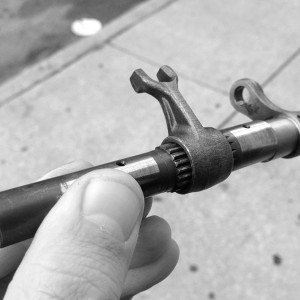

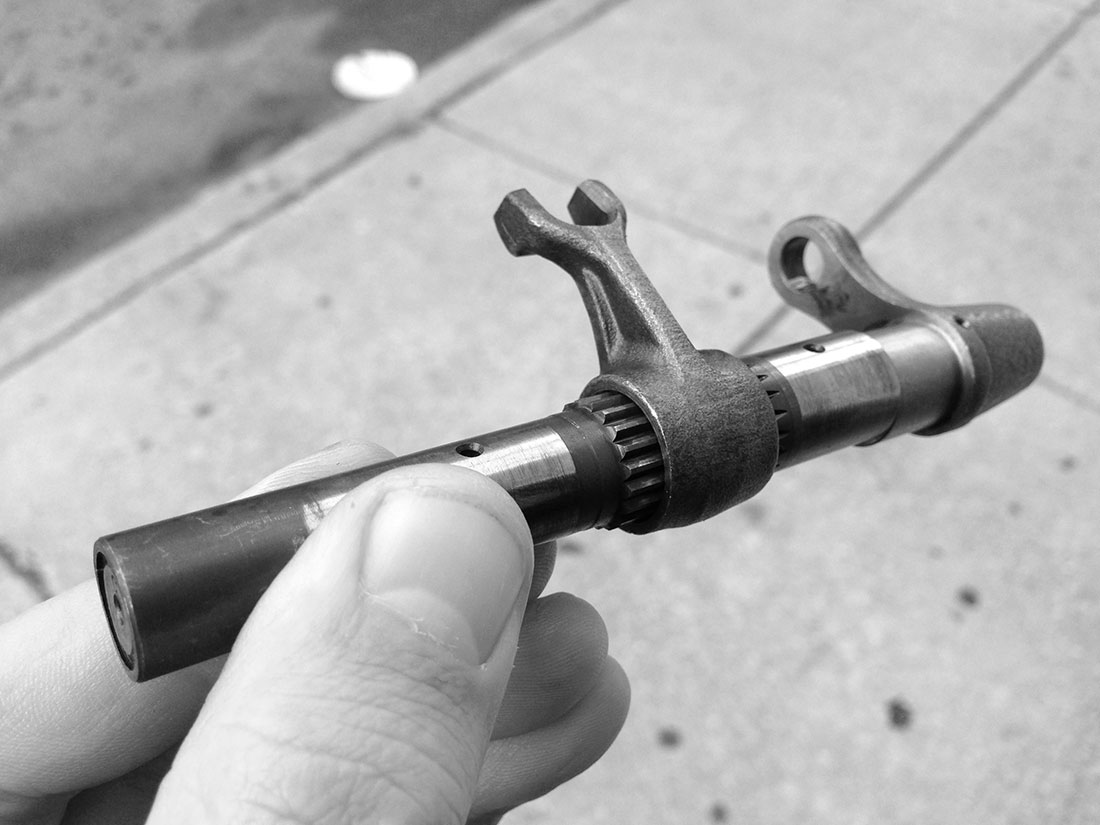
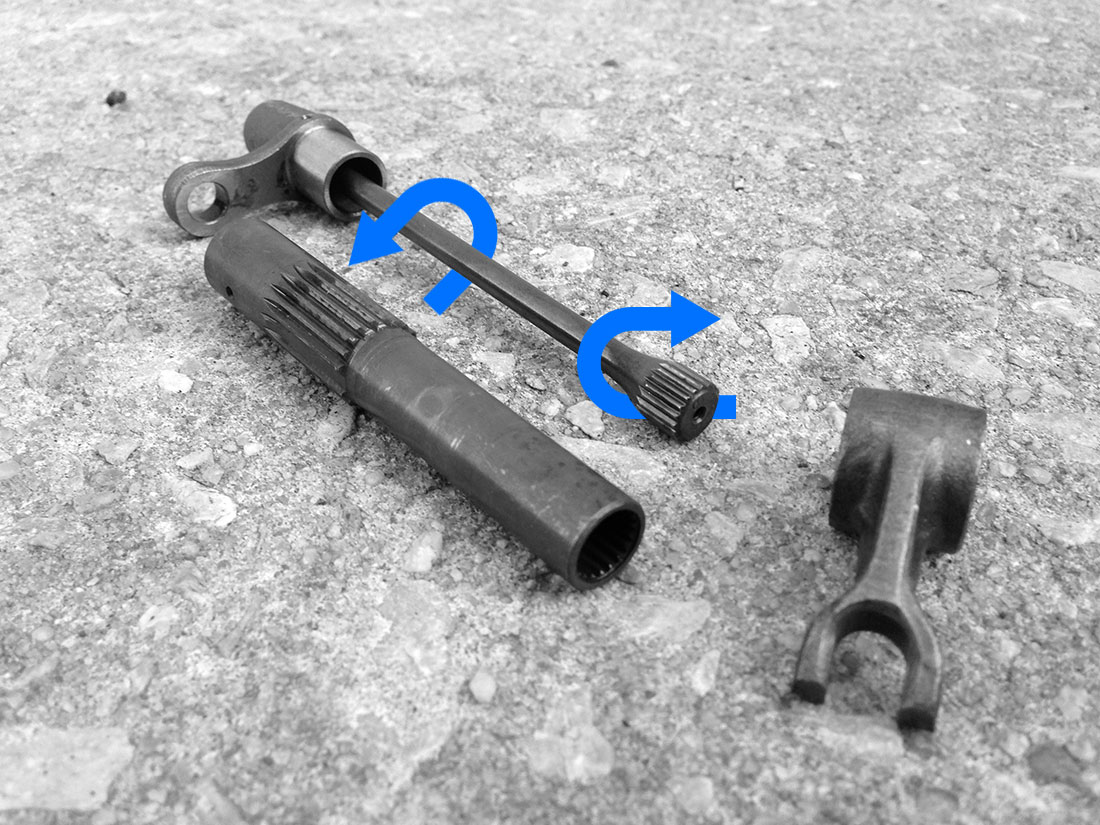
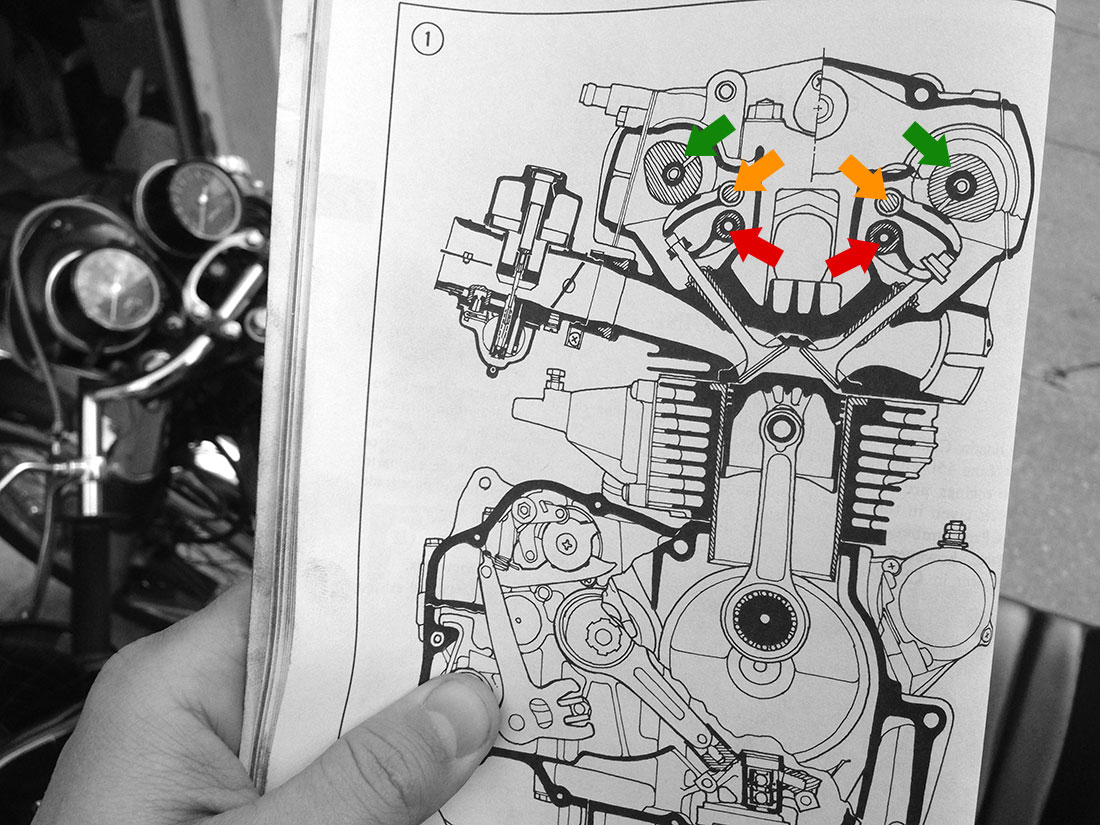

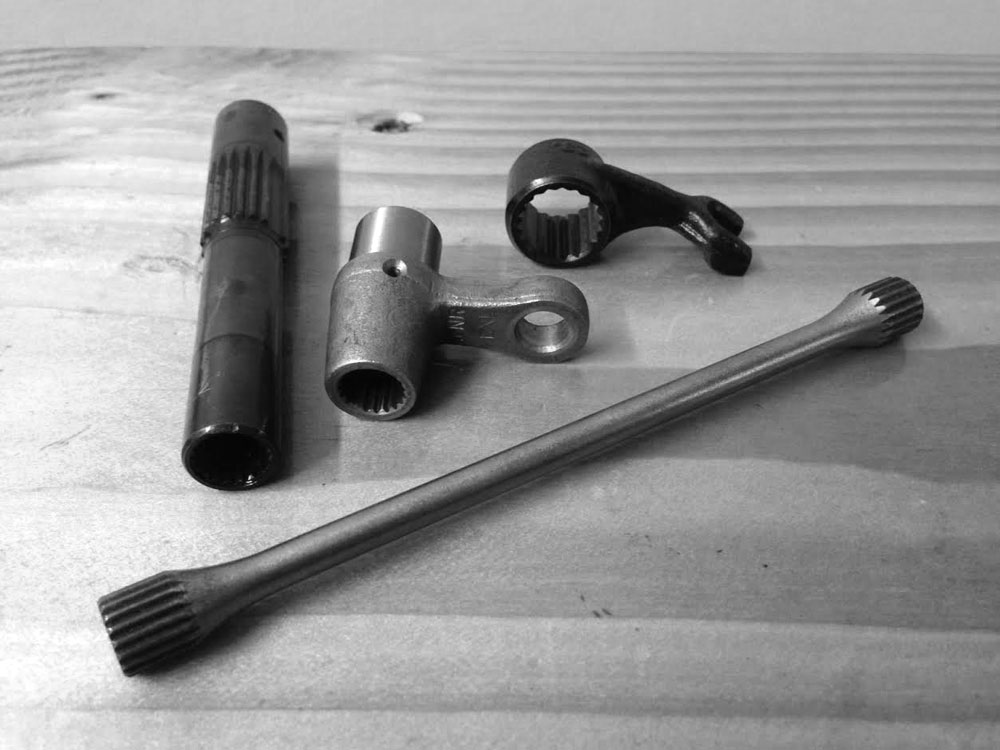
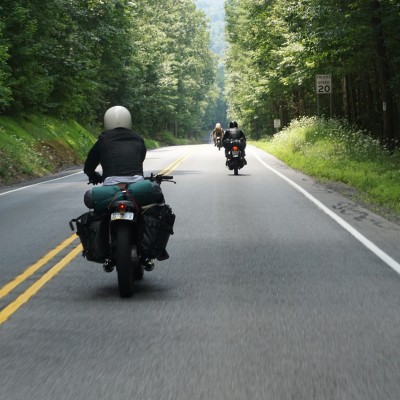
Thanks for sharing the cool info about the CB450. I have a ’74 that got a top-end job this summer. The guy who did my work is named Bob Gerberich and he runs B & L Motorcycle Sales and Service in Wadsworth, Ohio. Bob actually flat track races these things, so he knows how to get them to go fast. If you’re in need of a torsion bar, hit him up; he has a ton of CB450 stuff. If you need his contact info., shoot me an e-mail.
BTW, your 475 looks great. The guys who did your seat did a fantastic job. Good luck with the rebuild and the upgrades.
Ron M in Ohio.
Nice tech.
On the other end of things. . . if torsion bar tension is too high, you wear out the valve train faster as parts are exposed to much more force. Cam follower pads get worn. Valve seats get worn from valves closing harder. Cam lobes get worn. Etc.
The engineer in these motors is indeed phenomenal.
Jason
I’m rebuilding the top end on one of these suckers right now as well. An important note when disassembling and reassembling: These torsion bars are DIRECTIONAL so keep track of which bar goes where (ex. Right Side Exhaust, Left Intake, etc) and put them back together the same way. If they are installed backwards the “spring” tension could be different from spec and F— things up.
Looking good, nice write up. Good luck with the over-bore.
bob.
@bob
what exactly are you doing to your cb450 head?
did you test the tension rate on the torsion bars to confirm if they’re within spec and if so, how did you do it?
again, eBay seems to have plenty of NOS side B for cheap.
also, were your cam followers chewed up or dished inward?
are you going with a high-lift cam?
let me know.
Nice post. It’s amazing how many different designs there are to accomplish the same thing. Any clue as to the benefits/drawbacks of this system? Obviously a negative is the wearing torsion bar, but I’m wondering what benefit negated the additional point of weakness. Great post!
@Ed
The engine was losing compression through the piston rings. Turned out the ring gaps were all in line (not in the proper 120 deg. pattern) and the 2nd ring was stuck inside the piston, unable to expand and seal correctly.
The bike has only 4K on the clock. Cam followers and cam itself are in great condition still, no dishing. Right now the engine is staying stock, just replacing the worn top end bits and gaskets.
I didn’t check the bars for tension rate since the mileage is low and the bike has no signs of abuse. Not sure how exactly you can accurately use the torque wrench method. What would you use as a reference point to correlate to the torque spec?
@bob
cool…
I was just curious.
I spoke with a guy from team Hanson and he explained how you use a torque wrench attached to the side that sticks out of the head and bend the torsion bar towards the one hole that it bolts into.
Honestly, i’m not 100% certain on how to check the tension spec either. Once I figure it out when I actually try and do it, I plan on doing a little write up on it.
Stay tuned.
I should be doing all this shit in Dec and/or very early Jan.
and…
this is a great write up of the head assembly:
http://www.hondatwins.net/forum/viewtopic.php?f=5&t=12231
The spec and testing for torsion rods (and any kind of spring really) is just how much force it takes to move it X distance. In the case of coil springs, the distance would be expressed as linear movement. In the case of torsion springs, it would be expressed as angular movement (degrees of rotation).
So in this case, the spec would be something like “it should take 40Nm to twist the rod 40deg”. Of course, I have no idea of the actual numbers.
Theoretically, there is another characteristic that could be evaulated, but it is outside the realm of the service shop: What is the rate of force applied over that distance. I.e. – force increases XNm per degree. The nature of the material and the shape of the cross section (and the age/fatigue level) determine this characteristic.
Jason
. . . btw, you would perform that test with the rod in place (or secured in a similar manner to how it would be held in the head) applying force with a beam type (not clicker) torque wrench and a degree wheel or some other means to determine that you’d twisted the rod to the desired extent.
Jason
@jason
Thanks! I’m def gonna try and test side A and I’ll report back once I figure it all out.
What do you mean “no springs”? It’s a spring. Just one of a different shape…
Sorry but I have to correct some statement.
1st
The torsion bar dosn’t get physicly twisted. If you take a look on one side of the torsion bar you’ll find the spring inside a locked space.
So there’s a spring. Its not just the metal getting twist and taking back its shape.
2nd
If you want to prevent the floating valve on those engine, you can buy nos OR grind one tooth of the torsion bar setup and install it one tooth tighter.
🙂
@Johnathan
Regarding #1
I’m not trying to sound like a dick, but you are incorrect.
There is no spring inside a locked space.
It’s a solid piece of metal on the one splined side, then the torsion bar arm, then another solid splined arm on the other side.
I’ve had it entirely apart.
Both sides.
No spring anywhere or any piece that springs other than the long skinny torsion bar arm twisting.
Regarding #2
Yes, I’ve heard of people grinding off 1 tooth but I’ve heard that wears down the rocker arm quicker than normal.
@ Johnathan
Trust me, I thought there was a spring somewhere too.
If you want, I can take my extra one apart when I get home and photograph it… both sides taken entirely apart.
@Johathan
Read this:
http://www.thefang.co.uk/cb500teng.htm
@Johathan
At the end of this blog post, I added a new image.
I grabbed one of my extra torsion bar assemblies and took it completely apart.
Well after working many years on that cb450 engine of mine… I’m still lurning stuff…
I stand as corrected… man I’m more happy to have one of those.
I’ve read many manual on those engines and alway tought that on one end of the torsion assembly they had some kind of spring…
Torsion bar are awsome 🙂
I’ve run the 1tooth less assembly for a year and half and still rockers looks good.
But for sure you’ll wear them more. I run synt oil and try to keep it in tip top shape.
Here’s a pic of my build with 74mm High compression piston kit.
https://lh3.googleusercontent.com/5xMN-rSKTqUnfOTE-9kuNROLC6EWjNcjy_FTDCQMwV8=w958-h680-no
@Johnathan
Torsion bars are def awesome!
Your 450 looks cool man. I dig it.
What piston kit did you buy?
Henning / Hanson / M3?
Also… what carbs are you running? And what is your jetting / settings / needle etc.
I have stock carbs right now… but I’m going to upgrade to the Mikuni vm32 kit from power barn, so I can dial things in a bit more.
Hi, just wanted to comment on this discussion, Hondas tosion bar valve spring is an over-complicated design but its advantage over coil valve springs is it allows long valve travel without the problem of coil bind, where the spring compresses so much that the coils squash together not allowing the valve to fully open.
I rebuilt many of these engines in the 1970s when I worked at a honda dealer.torsion bars are not new or different.I believe BMW used them in some racing engines….I had a 1963 VW bug that used torsion bars in the front with king and link pins.Later I had a Plymouth baracuda with torsion bar front suspension.One day I was looking at the car and it seemed to be doing a nose dive,I got a shop manual that gave me the spec. for front height and low and behold it was way off….short story you could adjust the front height with a wrench on the stop bolt for the torsion bar. solved the light in the rear problem along with a set of Pirelli cinturato’s….like a different car.anyway a torsion bar is like a fat coil spring stretched out.when a coil spring is compressed the coils actually twist just like a torsion bar.a torsion bar has a very high oscillation frequency unlikely to occur in an engine ..so no valve float or harmonic issues in these engines.
I would like to add this…as I recall back in the day Honda offered different valve retainer collars….mostly thicker to increase valve spring pressure after a valve job that mostly decreased valve spring pressure due to valves getting pocketed in the seats after cutting….back in those days Honda cared more,,,,there were shims for the cb/cl/ca 72/77 to get better gear engagement in the transmissions….and shims to control end play in the cb/cl450 camshafts…..to see something truly amazing,try looking at Soichiro Iramajiri’s RC166 six cylinder 250cc racing Honda that Mike Hailwood rode to many wins in 1966/1967 there is a youtube video of it running and being torn down afterward….sorry it’s in Japanese but that wont matter to you gearheads….pure ecstasy.
Thanks for writing this article. This is so rad.
Hi well presented article – I am re commission a 1971 Cl450. I have an inlet valve that will not seat properly. A big clearence under the cam plenty of torque on the b tortion bar – could the lift cam have been incorrectly fitted on the wrong spline by the previous owner. No sign the head has been removed ion the 12k mile bile.